News
Design Magazine AXIS Vol.216 on Sale March 1 !
22.02.25
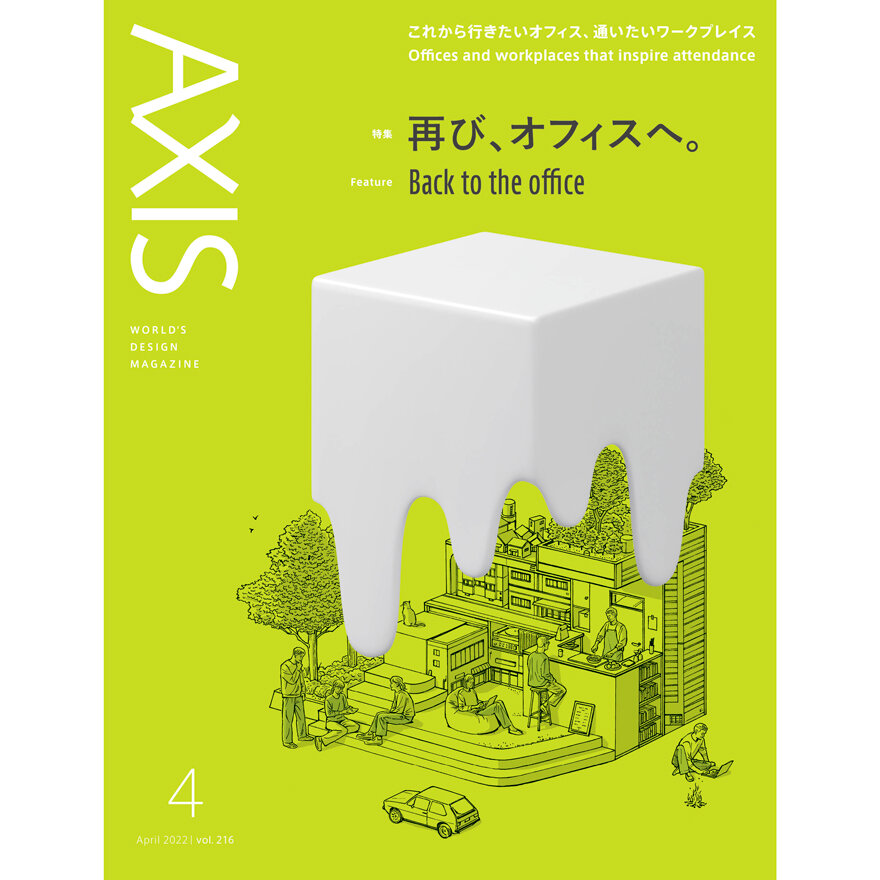
FEATURE Back to the office
Office and workplaces that inspire attendance
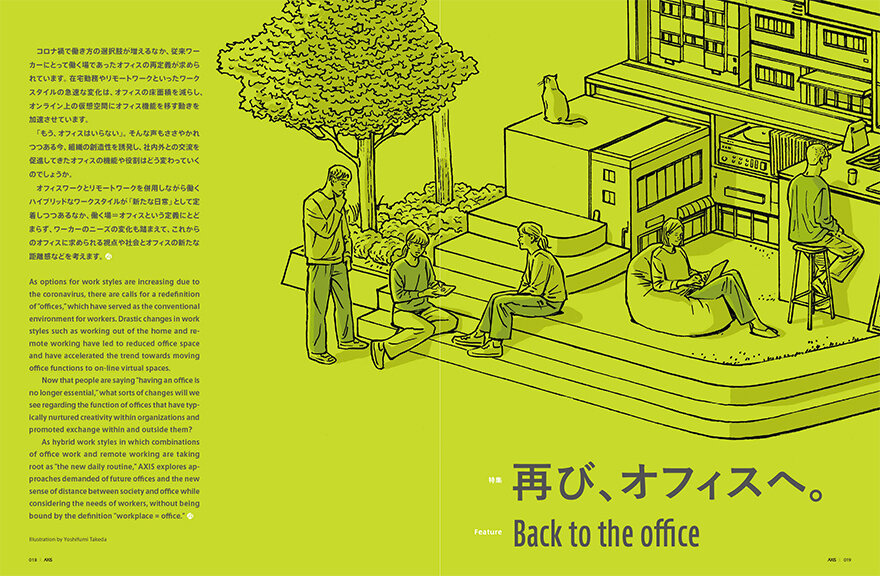
As options for work styles are increasing due to the coronavirus, there are calls for a redefinition of "offices," which have served as the conventional environment for workers. Drastic changes in work styles such as working out of the home and re-mote working have led to reduced office space and have accelerated the trend towards moving office functions to on-line virtual spaces.
Now that people are saying "having an office is no longer essential," what sorts of changes will we see regarding the function of offices that have typ-ically nurtured creativity within organizations and promoted exchange within and outside them?
As hybrid work styles in which combinations of office work and remote working are taking root as "the new daily routine," AXIS explores ap-proaches demanded of future offices and the new sense of distance between society and office while considering the needs of workers, without being bound by the definition "workplace = office."
Typology for new office space according to Studio O+A
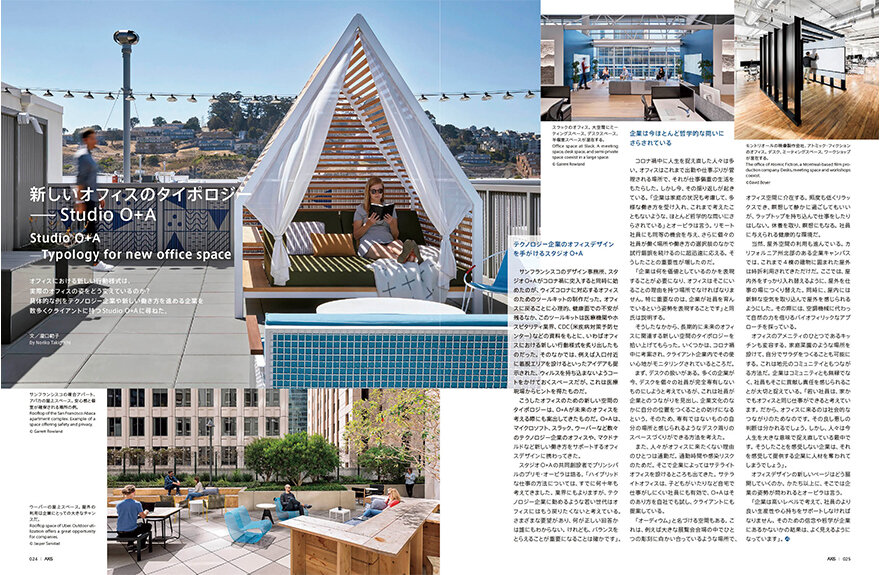
How are the new behavioral norms in offices changing office designs in practice?We asked Studio O+A, whose clients include many technology companies and firms that are promoting new working styles, about specific examples.
The "power of food" in offices by MONOSUS Shashokuken
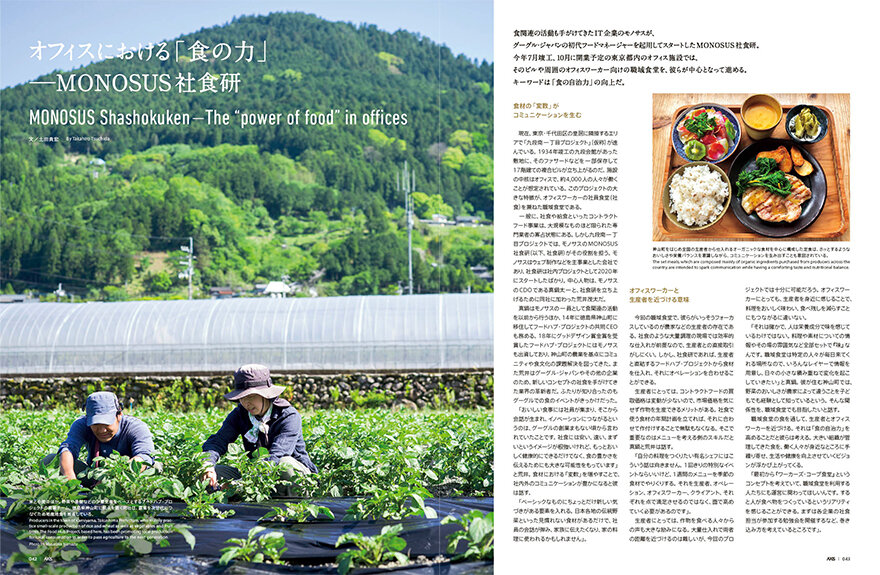
The MONOSUS Shashokuken (meaning "Company Cafeteria Research Lab") was started by IT company MONOSUS with Google Japan's first-ever food manager. In a new office facility in Tokyo to be completed in July and open in October this year, they will take the lead in developing a cafeteria for office workers working in the building and around the area. The key word is to encourage the "autonomy of food."
A dialogue with sociology professor Keita Matsushita and architect Junpei Nousaku
Elements that will remain in future offices discussed by a researcher and an architect
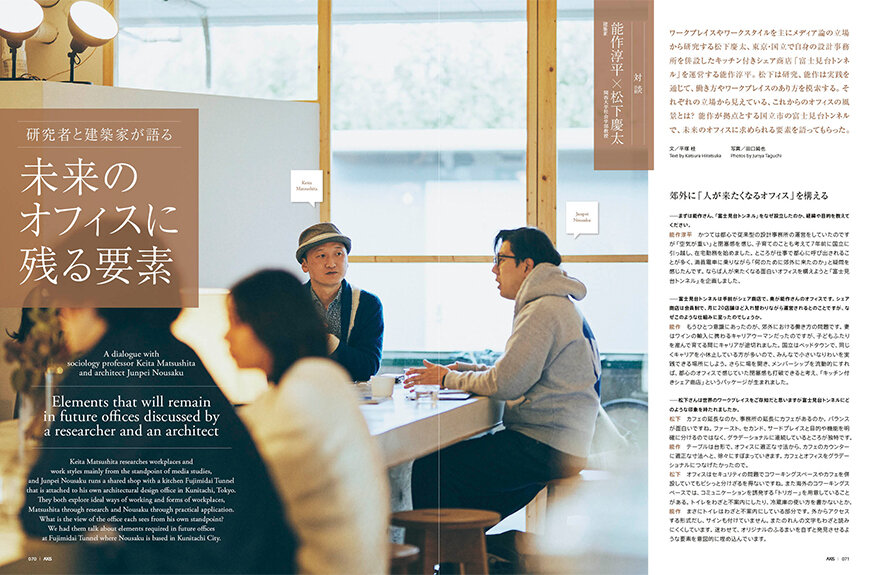
Keita Matsushita researches workplaces and work styles mainly from the standpoint of media studies, and Junpei Nousaku runs a shared shop with a kitchen Fujimidai Tunnel that is attached to his own architectural design office in Kunitachi, Tokyo. They both explore ideal ways of working and forms of workplaces, Matsushita through research and Nousaku through practical application. What is the view of the office each sees from his own standpoint? We had them talk about elements required in future offices at Fujimidai Tunnel where Nousaku is based in Kunitachi City.
LEADERS
Naomi Kawase Filmmaker/ film director
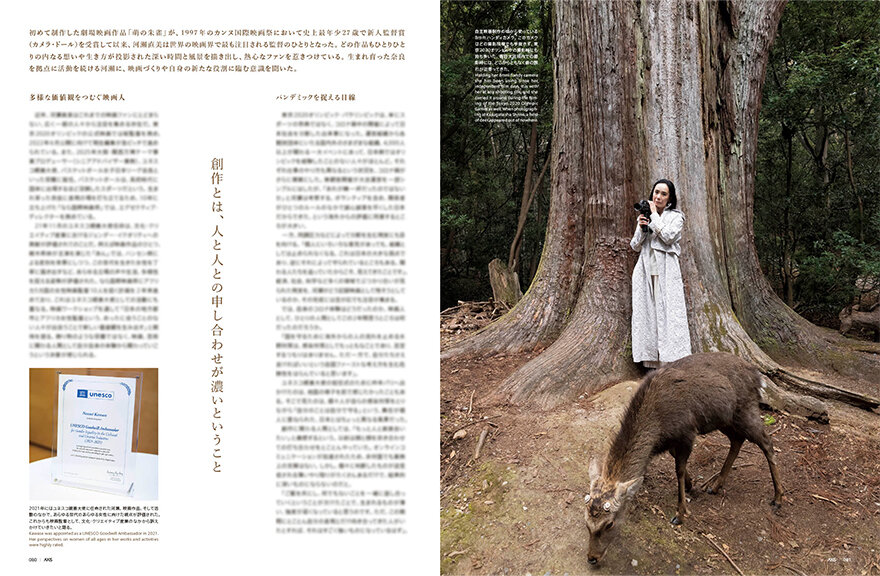
Ever since Naomi Kawase became the youngest winner of the Camera d'or at age 27 at the Festival de Cannes 1997, she has been attracting great attention in the world of film. We asked Kawase, who is active from her home city Nara where she was born and grew up, about film-making and her thoughts on challenging new roles.
Sci Tech File
In pursuit of simple yet beautiful principles hidden in the shape of organisms
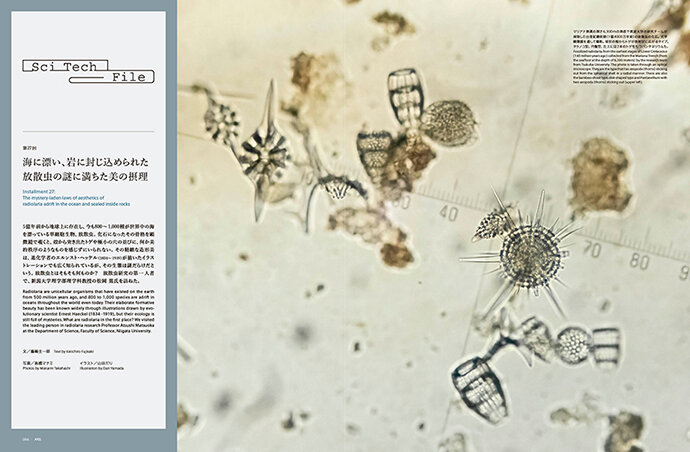
Why do zebras have stripes? How did panthers get the spatial pattern in which black dots are lined up in a circular manner? Although the meaning of the evolution of patterns is not known, the principles of pattern formation in living organisms have been clarified. In fact, what forms a pattern is a kind of wave (Turing wave) that is made through the reaction and diffusion of substances. We interviewed Professor Shigeru Kondo at the Graduate School of Formation Biosciences, Osaka University, who is trying to elucidate the principles of 3D morphogenesis.
INSIGHT
Enhancing the understandability
Nakanoshima Museum of Art, Osaka, projecting an image of new-style museum
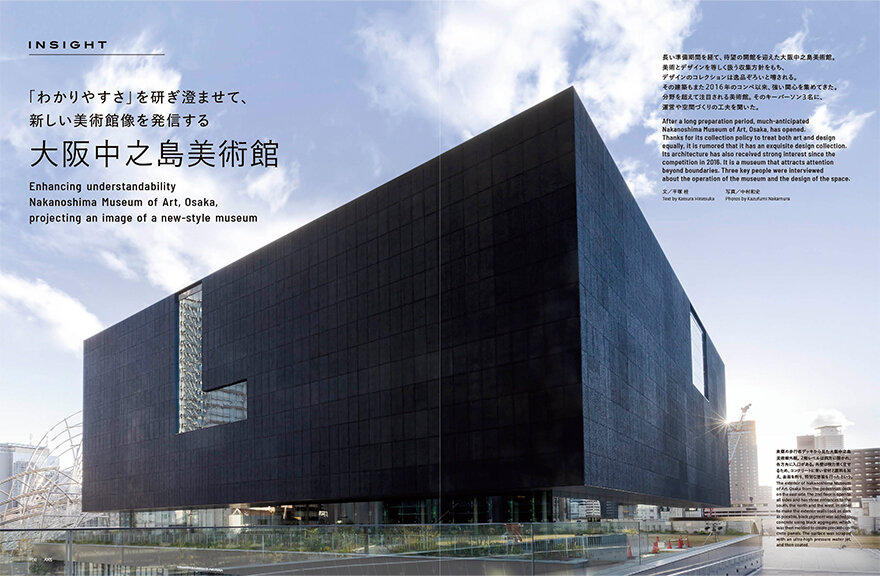
After a long preparation period, much-anticipated Nakanoshima Museum of Art, Osaka, has opened. Thanks for its collection policy to treat both art and design equally, it is rumored that it has an exquisite design collection. Its architecture has also received strong interest since the competition in 2016. It is a museum that attracts attention beyond boundaries. Three key people were interviewed about the operation of the museum and the design of the space.
For purchase